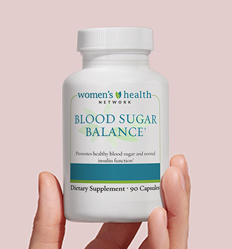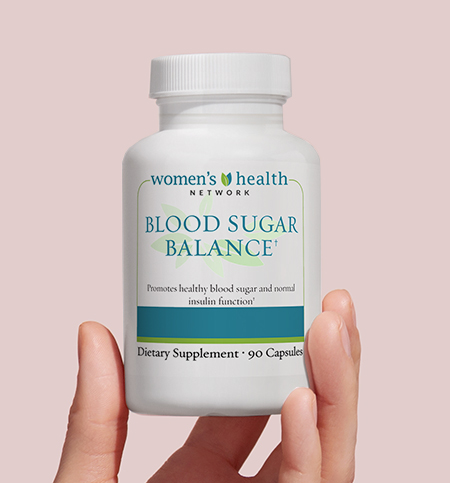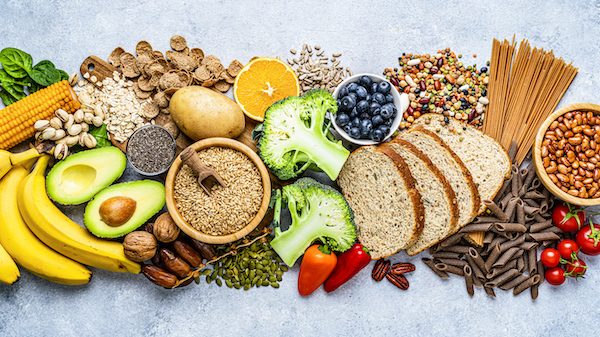Authored by Caroline Morin, NBC-HWC
According to the CDC, approximately 96 million American adults — more than 1 in 3 — have prediabetes. Of those with prediabetes, more than 80% don’t know they have it because, for many, there are no symptoms.
Are your alarm bells ringing yet? If you have been diagnosed or are concerned about your risk for prediabetes, it’s time to take action. Here is how Margret, an otherwise healthy, active 43-year-old, turned the tide on her diagnosis of prediabetes — and how her experience can help you too.
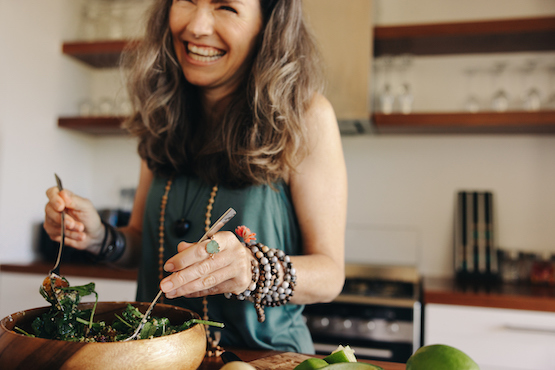
Article Note: Margret is a woman I helped in my holistic health practice. In this article, you will hear directly from Margret as she shares first hand about the challenges of prediabetes and the steps she took to reclaim her health. I fill in with context and some tips for any woman concerned with prediabetes.
What is prediabetes?
Prediabetes is when blood sugar, or blood glucose, levels are higher than normal, but not enough to be diagnosed with diabetes.
Our cells need glucose to use for energy. We get this simple sugar when we eat foods that contain carbohydrates. The body metabolizes the carbohydrates into glucose, which is then absorbed in the digestive tract. From there, glucose enters our bloodstream. At the same time, the body’s pancreas makes the hormone insulin to act like a “key” to unlock the door to our cells so that glucose can enter.
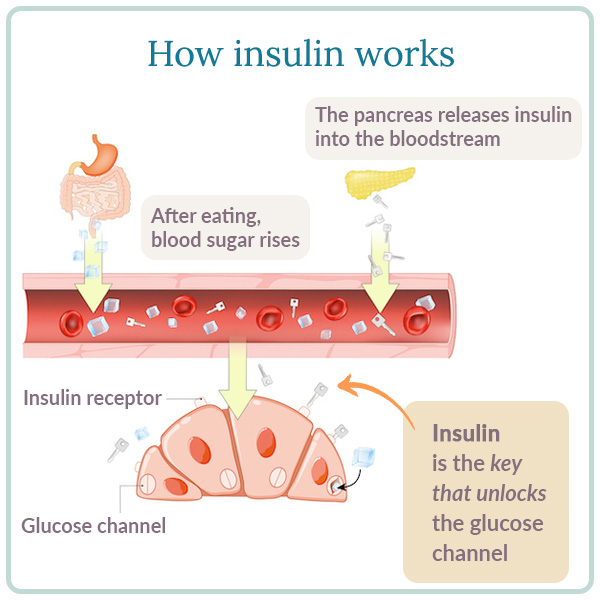
How prediabetes develops: If our glucose levels are already high, the cells won’t respond to the insulin’s effort to let more blood sugar in. So the pancreas starts making more insulin to try to get the cells to open up.
If left untreated, the cells become “insulin resistant” and glucose continues to build up in the blood. Eventually the pancreas can’t keep up with all this work and blood sugar continues to rise, leading to type 2 diabetes.
Meet Margret: A self-described “sugar addict”
Margret is a horse trainer and manager of a prestigious riding facility who puts in long hours in a high stress environment. She has built her career as a successful professional horsewoman by always being available for her clients and the horses she cares for. The physical nature of her work keeps her active, but in her early 40s Margret noticed she was starting to put on weight and her energy dropped.
She recognized that she was eating a lot of sugary carbs.
“Muffins for breakfast, candy or cookies throughout the day, definitely dessert after dinner. I drank a lot of soda. I craved it all the time. I’m an intelligent woman, I knew it wasn’t good for me, but I was busy doing life so I just kept on eating what I wanted.”
Over time these unhealthy habits started to catch up with her.
“I had put on about 25 pounds but I’m tall so it didn’t really show. I was super hungry all the time and I tended to overeat but not ever be satisfied. My energy levels were low, but I attributed it to the fact that I worked a lot.”
Margret developed prediabetes
A routine visit to the doctor was Margret’s wake up call.
“The doctor went over the results of some routine blood work. All of my numbers were off. My doctor honestly didn’t really seem concerned. He said we’d just keep an eye on things. My fasting glucose levels were at 107, which I knew indicated prediabetes and my blood pressure which had always been right at the normal to low range was 120/86 indicating prehypertension.
I asked myself, if this was one of my horses, what would I do?”
“I can’t do this to myself”
Margret decided to take immediate action. “I knew I would never ignore the health of the horses I care for. It’s interesting to note that horses can become insulin resistant too. I knew the protocol to manage this with my horses was to change up their diet. So I did some research for myself and decided it was time to take care of myself and cut the sugar.”
Margret was all in. “I learned a lot. Fast.” She began reading labels, which was something she had never considered before, and cut out everything with added sugar.
Simple & sustainable changes
Margret, however, wanted to make sure that the changes she was making were ones that would serve her in the long run. She did this by following the tried and true advice that applies to anything in life: Keep it simple.
“I knew I needed to make these changes simple, something I could stick to and not just another diet that wouldn’t last. I did only what I thought I could manage realistically without spending a ton of money and time, knowing that I am not big into cooking and meal prepping. I think keeping it simple helped.”
Margret’s approach is one that most lifestyle coaches would recommend. She kept her goals realistic, recognized her obstacles and engineered her environment to set her up for success.

“I had to change up the way I shopped. I found the best way was just not to buy anything with added sugar at the grocery store so it wasn’t in my house. I made sure there were lots of snacks, like vegetables and fruits that I liked and were easy to grab in my fridge.”
“I upped my protein. I live by myself and I don’t like to cook a lot, but I made sure I took the time each week to cook up a couple of chicken breasts. I ate a lot of chicken! I bought a bunch of spring mix and a little bit of dressing or seasoning, something to make it tasty.”
Movement matters
Experts recommend at least 150 minutes a week of moderate intensity aerobic activity and moderate to high intensity muscle strength training at least 2 days a week.
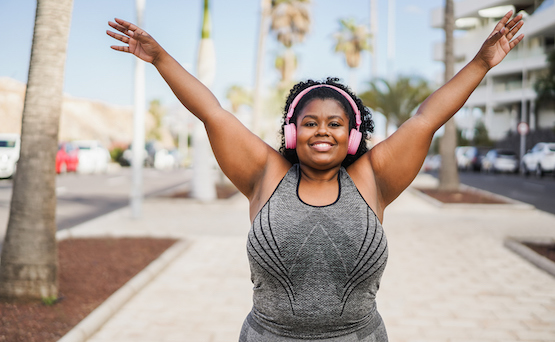
Margret was lucky. She was already getting more than the daily recommended amount of exercise training horses and working at the barn. Most of us sit a lot in our jobs and need to make an effort to get enough exercise. Exercise helps cells overcome insulin resistance and can lower blood glucose levels. Even a brisk 20-minute walk after eating is an effective way to improve blood glucose metabolism.
Handling setbacks
Making lifestyle changes – and sticking with them – is not easy, as Margret discovered.
“I had to just realize what I was doing was hard. I was changing up a lot, and the first few weeks were rough. Every once in a while someone would bring some muffins into work and I would just say, ‘I’ve just gotta have some!’ So I’d have half a muffin and try not to be too hard on myself.”

Though there isn’t one right way to cut sugar, the best thing to do is to just get started. Some experts recommend giving in a little, while others recommend going cold turkey and abstaining completely. It’s important to know yourself and figure out what works best for you.
Seeing changes
As she stuck with the lifestyle shifts she was making, Margret started noticing positive changes and learned how to cope with challenges and setbacks.
“After a few weeks my cravings really did go away. I wasn’t so hungry all the time. It wasn’t surprising, but it was a really nice change.”
“I did backslide a little a few months in. The realization that if I didn’t take care of myself I one day might not be able to do what I want to do was big for me. So I aimed to be just a little more conscious every day.”
Margret’s results
One year into her journey, Margret is happy to report that her blood glucose levels have dropped well into the normal range and she has reached her goal of losing 25 pounds. Go, Margret!
Moving into maintenance
With her changes now established as new healthy habits, Margret is mastering the art of balance.
“Now I’m not quite as restrictive. I’ll eat a sandwich with a slice of whole grain bread. Dinner is still chicken breast and salad but I’ve added some whole food carbs like quinoa, vegetables or a small serving of rice or potatoes or sometimes even pasta. Just not the huge portions I used to eat. Just enough to satisfy.”
Like many women, Margret has a busy day with no scheduled time for lunch. She often has last minute meetings with clients and can’t necessarily leave work to get something to eat.
So she prepares ahead. “I try to make sure I take the time to pack a lunch with some good protein so that when I get home I’m not so hungry that I just overeat. Sometimes I forget and blow it, but I try to remind myself that it’s OK and I’ll make better choices or plan better next time. Now it’s not such a big deal. It’s just my lifestyle.”
Advice from someone who has been there
Making dietary changes can be overwhelming. Margret has some advice for anyone who is thinking about making changes for their health.
“I’d say, try it and give it a couple of weeks. If you put enough nutrition in your body, your body will tell you thank you, and then stop asking for all the junk things. You might be surprised to find that you’re naturally eating less when you’re eating more nutritious foods.”
“I’m the ‘Do-it-yourself” type, but I would love to have had someone to do this with. I’d encourage others to reach out for support.”
Understanding your risk for prediabetes
It’s important to know your risks for prediabetes. Risk factors include:
- Being overweight
- Being over 45, though the risk starts increasing after 35
- Having a parent or sibling with type 2 diabetes
- Being physically active less than 3 times/week
- Having gestational diabetes or delivering a baby over 9 pounds
- Having polycystic ovary syndrome
- Race or ethnicity: Though it’s unclear why, some Black, Hispanic, Asian American and American Indian people are more likely to develop diabetes.
It’s important to note that Margret only fell into one of the risk groups. Though she was about 25 pounds overweight, she was active and had no family history of diabetes. If she hadn’t paid attention to her bloodwork, she’d be on the path to type 2 diabetes. She encourages everyone to be sure to ask their doctor to do yearly routine blood work and be proactive, even if your numbers are at the low end of high.
Get support for healthy blood sugar levels
Margret was able to do this on her own, but that doesn’t mean you have to! If you want support, get it! However, move forward with the caveat that plenty of misinformation about diet and exercise is lurking out there, including gimmicky fads that just don’t work.
What will work? The CDC-led National Diabetes Prevention Program recommends the following steps for healthy blood glucose levels:
- Discover how to eat more healthily and move more
- Get support from people with similar challenges and goals
- Work with a coach to help you create realistic and lasting changes
- Learn how to manage stress and stay motivated.
 | Concerned about insulin resistance and diabetes? Learn 4 ways to naturally balance your blood sugar. |







